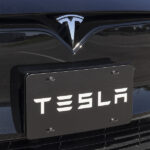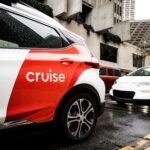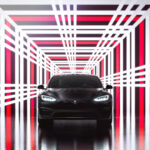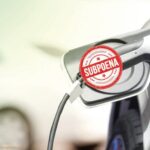While Tesla has designs on using the data it collects to price insurance policies, the founder of an InsurTech is using it for the other end of insurance transactions—to unravel the story of accidents.
Executive Summary
“When an automated or autonomous vehicle is involved in an accident, how is liability assigned? Who is to blame—the drivers, the car or a combination? Is objective vehicle data available, and what does it tell us?”The questions from the website of law firm Nelson Niehaus are the same ones being tackled at companion InsurTech Quantiv Risk. Mike Nelson, law firm partner, “mobility nerd,” Tesla driver and InsurTech executive described his journey to founding both firms to Carrier Management recently.
Feature photo: Courtesy of Tesla
Michael Nelson, a lawyer with 30 years of experience representing carriers and corporations in complex business litigation, class actions and insurance regulatory matters, is the founder of the InsurTech Quantiv Risk. He is also a partner in the law firm Nelson Niehaus, which offers litigation and risk management services related to emerging mobility technology. He started both firms in 2020.
According to a bio on the Nelson Niehaus website, Nelson is also a “mobility nerd.” His frequent LinkedIn posts about all things mobility, and about his personal experiences in driving Teslas, are peppered with the hashtag #askthecar—a shorthand phrase that describes what Quantiv Risk is all about—bringing transparency to what happened in accidents involving vehicles with advanced driver assistance systems (ADAS).
“The car did it,” he notes, is one explanation that the person in the driver’s seat of such a car might report to an insurance company after an accident. That assessment isn’t always completely wrong based on vehicle performance data that Quantiv Risk reviews from Tesla. Quantiv Risk works to deliver this type of data in a digestible format to claims personnel at auto insurers handling such claims and provides consulting services to help in adjudicating them.
Nelson, whose everyday car is a Tesla, has the experience to know that his “really nice car sometimes does goofy things.” More importantly, he knows that human beings are ill-equipped to report whether the car did it, the driver did it, the other driver did it or some combination.
“Human beings are terrible witnesses.” When you see what vehicle data reveals about the details of an accident—”what really happened versus what’s reported by customers—it’s amazing” how different the accounts are. “And police reports are really nothing more than what people told the police officer.”
During recent phone interviews with Carrier Management, Nelson recounted a number of stories—some from Tesla accident situations that have been or are currently in litigation and some from his personal experience driving Teslas—revealing the real truth about many of these events: Humans don’t know what happened. Automated vehicles sometimes misbehave. And when cars are partially automated, humans know even less about what happened and are ill-equipped to respond to correct misbehavior by cars that are thinking much faster than they are.
“We’re going to have to deal with human factors,” he said. “This is probably the thing I care most about: It takes the human being [at least] one-and-a-half seconds to even process a thought about what’s taking place and then react. In the engineering world, they call that a takeover response,” he said, suggesting that the legal system can’t make drivers who navigate roads in highly automated vehicles fully responsible for what happens. “They can’t be if they don’t understand what’s going on.”
“Our business model is built around the idea that we will be the central clearinghouse for this data…The value is being transparent.”
Mike Nelson, Quantiv Risk
“The objective of Quantiv Risk is to sit in the middle of the traffic ecosystem for everybody, and just bring one single point of truth to what happened in an accident. It will make cars safer. It will become quicker to resolve who’s right and who’s wrong. And it will get rid of a lot of worthless lawsuits that clog the judicial system,” he said.
“We plan on just putting this Rosetta stone in front of everybody,” he says, referring to summaries of fact-based stories deciphered from the data of vehicles equipped with ADAS and ultimately with full self-driving capabilities, or Level 5 systems. “We see anybody who has an interest in the outcome of an accident as a potential buyer,” he said, noting that while the InsurTech is currently only delivering such reports based on Tesla data, other car makers’ vehicles and even commercial vehicle reports are planned in the future.
Former Claims Adjuster Heads Out on the Highway
The Tesla driver is quick to point out that he is not anti-Tesla. He documented the excitement of his earliest experiences driving a Tesla on a 12-state trip across the U.S. when he was a partner with the law firm Eversheds Sutherland in 2016.
“Charley allowed us to take in more of the scenery, and because it was in control, allowed both of us to relax a bit more while providing relief in the boring stretches,” he wrote in an Oct. 4, 2016 post on the Eversheds Sutherland “Up to Speed” blog, referring to a Tesla Model S 90 D he named Charley after purchasing the car in California. Earlier blog installments explain that the moniker “Charley” was Nelson’s nod to a favorite book, John Steinbeck’s “Travels With Charley,” recounting the authors cross-country road trip with a poodle named Charley.
“Autopilot can, and will, unexpectedly cede control with what can be a very abrupt warning,” he also wrote in the blog post, documenting the risk that’s interspersed with the joy and benefits of automation.
Now the owner of a 2019 Tesla Model 3, Nelson filled Carrier Management in on the backstory of his life before becoming a Tesla owner and Quantiv Risk founder, and the mile markers that he passed on his unusual route to becoming an InsurTech founder.
“I started off in life working in my family’s body shop in Providence, R.I.,” he said, noting that he would go on to become a claims adjuster (“because when you graduate with a psychology degree from Cortland State and you know how to fix cars, you’re going to become a claims adjuster”).
After a few years, and several promotions, Nelson’s employer, MetLife, offered to send him to law school. Emerging with his law degree in 1992 after attending for four years at night, he had the option of going on to be a home office executive or learning to litigate. Choosing litigation experience, “I was just doing what I’d call regular insurance litigation, and my biggest client at the time was Nationwide Insurance. They got hit with a class action on aftermarket parts. All of a sudden I became this nationally prominent class action lawyer, with that came a lot of regulatory experience,” he said. “That’s what I was doing for the longest time.”
An unplanned meeting with an Audi representative at a 2013 conference signaled a new direction. “At Audi, our standard is that by 2017 the driver is only going to touch the steering wheel 10 percent of the time,” he said, recalling the Audi employee’s words from memory.
“That’s not going to happen. How will we adjust claims? How will we assess liability? How’s that going to work?” Nelson remembers thinking. “I immediately went on this journey,” he said, telling one of his biggest insurance carrier clients, “You have to get ahead of this and see if it’s real.”
That’s when he decided to test the reality for himself, buying and taking Charley on a ride from California to New York.
Soon, an insured for the carrier he had alerted to the emerging technology got into an accident on the Long Island Expressway, and Nelson was involved in his very first significant Tesla case involving a driver using Autopilot. “We said to Tesla, we’d like to see the data as to why this car had the accident. Tesla told us no. So, we sued them to get the data.”
Years later, during a similar case, Tesla’s attorney told a judge, “Our car is generating 2,400 signals, and those signals are coming out one every 1,000th of a second, and we basically have, for every accident, the data for the life of the car.”
The former claims adjuster realized, “If we can see the data, we can see how the accident actually happened.”
“So, I really started focusing in on Tesla, [but] it’s really not a crusade against Tesla,” he said, noting that the revelation of this vehicle performance data focused his attention. When insurers think about accident data, they tend to think of the event data recorder—EDR data from the car’s black box. “This is not that at all. The car captures all of its own data and beams it to the cloud the minute it senses an accident. [And] it beams the video up as well,” he said, noting that Quantiv Risk works to time the data transmitted to Tesla to frames of Tesla camera video (from multiple cameras sometimes giving as many as eight different views) in order to replay the accidents over and over and over again.
Data Loggers
Nelson refers to the data that’s transmitted to the cloud as “vehicle performance data,” or VPD. Internally, Tesla refers to it as “data logger data,” he said.
Drilling down on the differences between VPD and EDR data, he notes that EDR data is limited to roughly five seconds, recorded at intervals perhaps two-tenths of a second apart. “The much finer view of the data is incredibly important,” he said, referring to VPD transmitted to Tesla—from the car to the cloud—in intervals of one-1,000th of a second.
“What sort of automation was being used by the driver? What kind of warnings did the driver get? What did the car see in front of it?” This is all captured in VPD. “Teslas are cued to look at what’s called following distance. When it’s in traffic or cruise control, the car is reporting on how many meters away the thing in front of it is.”
“None of that is in EDR data,” he said.
EDR data from vehicle “black boxes” has long been available to vehicle owners. A National Highway Transportation and Safety Administration document dating all the way back to 2006 that turned up in a CM online search confirms that while ownership of EDR data is a matter that varies by state based on individual state laws, the NHTSA considered the vehicle owner to be the owner of the data collected from an EDR. “The owner can give permission to download EDR data,” the NHTSA document says, also describing the rights of police departments and insurance companies.
Online reports from the websites Electrek and Teslarati reveal that in 2018 Tesla added an EDR to its cars and has recently made it easier to retrieve EDR data, providing links to a place to purchase required equipment (pricey cables) and to publicly available software for use in retrieving EDR data, as well as a free online service that generates a report in PDF format from the retrieved data.
But what about VPD?
Carrier Management tried unsuccessfully to reach Tesla via email to ask about VPD ownership and access rights to the VPD transmitted to Tesla.
Nelson confirmed that consumers can access their own data from Tesla in certain situations, an accident being one of them.
Getting into more details of the data itself, he explained that all of the VPD from a Tesla car is written to the SD card, similar to the removable memory cards found in digital cameras, mobile phones and other portable devices. But Tesla doesn’t need to disassemble the dashboard to retrieve information on that SD card. “It gets transmitted from the car to Tesla when the car has a wake-up algorithm triggered.”
Basically, “the car will tell Tesla’s computer system that it had an event. The computer system then says to the car, ‘Please send us data from the event,'” initiating action to transmit the data to a cloud location.
“When we’ve asked for data, they’ve sent us three days’ worth” in some cases, he said, confirming that pre-crash data is transmitted back to Tesla when the algorithm triggers.
What does three days of data from the car’s data log actually look like?
“You open a spreadsheet and scroll all the way down to the bottom [to find] there are 33,000 lines of data—and timestamps. So, you can tell how long the duration of the event is,” he said.
When Tesla gets a request for data from Quantiv Risk, “engineers go into their data logger program and populate it to an Excel spreadsheet.”
Deciphering 33,000 Lines of Code
Explaining how Quantiv Risk helps insurance companies with interpretations of this data, Nelson returned to the common situation in which an insured calls up and says, “I’m not at fault. My car did it.” They are right sometimes and wrong other times. “So, there are customer service issues associated with this. [And] better insight into what actually happened.”

“The objective of Quantiv Risk is to sit in the middle of the traffic ecosystem for everybody and just bring one single point of truth to what happened in an accident.”
Nelson related one claims situation involving a woman whose car was rear-ended when she was driving in the high-speed lane of a highway. While claims adjusters typically assume that the following car is 100 percent at fault in rear-end collision situations, this particular incident is not so straightforward. The reason she got rear-ended was because her Tesla, which was traveling at 70 miles per hour, slowed down to 54.
“The driver didn’t slow the car down. The car slowed down,” he said, noting that the VPD revealed the car was in the midst of an automated car lane change, “saw something that spooked it” and decided to abort the lane change and slow dramatically. “Sometimes this is called a ‘phantom stop.'”
In this situation, the insured didn’t know she had made a lane change and didn’t understand why the car decelerated. Her take: “The guy barreling down behind me is at fault.”
Said Nelson, “We can take that story down to 1,000th of a second” and match the video, confirming that his firms have been involved in 100-150 claims so far and that claimants have all been drivers of Teslas. “We’re not anti-Tesla. That’s not why we’re doing this. We think they’re further ahead than most, and it’s a good way to see what the future’s going to look like”—when all car makers will have similar cloud data.
In fact, Tesla’s online vehicle safety reports suggest that Teslas are safe. For fourth-quarter 2021, for example, the company says it recorded one crash for every 4.31 million miles driven in which drivers were using Autopilot technology. “By comparison, NHTSA’s most recent data shows that in the United States there is an automobile crash every 484,000 miles,” the safety report states.
As more car makers move to capture and transmit VPD going forward, will this eliminate the need for claims adjusters in auto insurance?
Yes, Nelson said.
Asked whether insurance company systems are equipped to handle this data, he opined that they aren’t. “We have a technical staff that’s been building the prototype of a tool that takes data, sorts it, then reframes it so you can see it on a graph and understand it. Then we have a desktop tool that makes it a lot easier to understand what’s in the graph,” he said, stressing the need to make sense out of spreadsheet data across 200-300 columns, capturing 2,400 signals: “This driver’s hands were on the wheel, yes; this person touched the brake to this degree, yes,” etc.
“We have to decide which signals are appropriate for which accidents,” he said.
Besides Nelson, Quantiv Risk’s C-suite includes a team of insurance industry and legal veterans, including General Counsel Stephanie Niehaus, a litigator with nearly two decades of experience and a similarly keen interest in emerging technology, who is also a partner in the Nelson Niehaus law firm. A small team of quants and data scientists fill out the current roster of Quantiv Risk. “We’re a relatively new company. We are just going through the first round of raising funds,” Nelson said.
Typically, Quantiv Risk engages with a carriers’ head of claim, the general counsel’s office or head of government affairs, said Nelson. “A lot of people think of me as somebody who really understands these issues. Let’s face it, how many attorneys grew up fixing cars then became claims adjusters, then became senior management at an insurance company, then tried cases, then [learned] the regulatory scheme, handled class actions? Now the next phase is learning the future of technology and how it’s going to impact the insurance. There’s just not that many people that are going to fit that profile,” he said.
“Our position on this is it’s not good enough to just get the data. You’re going to want to adjudicate a claim with this, whether it’s in litigation or negotiation. Insurance Company A needs to be able to share that data with Insurance Company B,” putting everyone on the same page about what the facts are. “That’s why our business model is built around the idea that we will be the central clearinghouse for this data…We fully expect to be selling it to a lot of people, including insurance companies,” but the idea isn’t that Carrier A works with Quantiv Risk “and therefore you have to knuckle under. The value is being transparent,” said Nelson.




















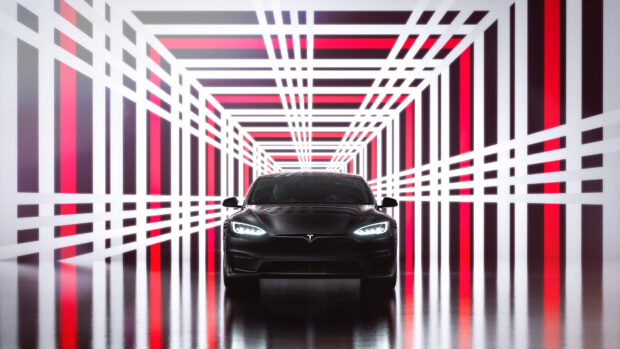
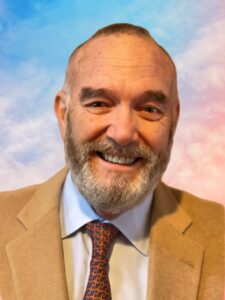
 What to Expect in 2026: U.S. P/C Results More Like 2024
What to Expect in 2026: U.S. P/C Results More Like 2024  Viewpoint: Agentic AI Is Coming to Insurance Industry – Much Faster Than You Think
Viewpoint: Agentic AI Is Coming to Insurance Industry – Much Faster Than You Think 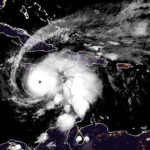 Global Warming Likely to Push Future Hurricane Seasons to Extremes: Study
Global Warming Likely to Push Future Hurricane Seasons to Extremes: Study 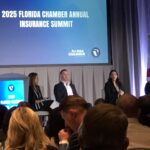 ‘Dream Is in Sight:’ Chamber, Reinsurers, Insurers Urge Florida to Stay the Course
‘Dream Is in Sight:’ Chamber, Reinsurers, Insurers Urge Florida to Stay the Course 




